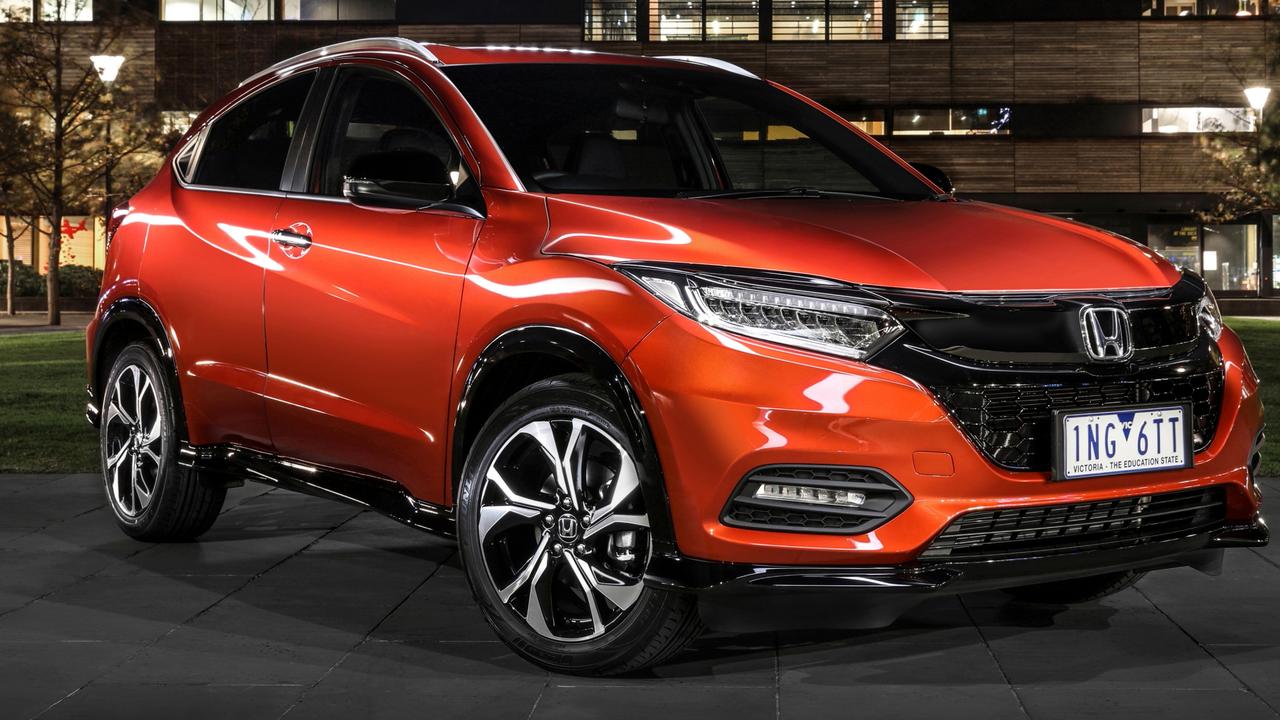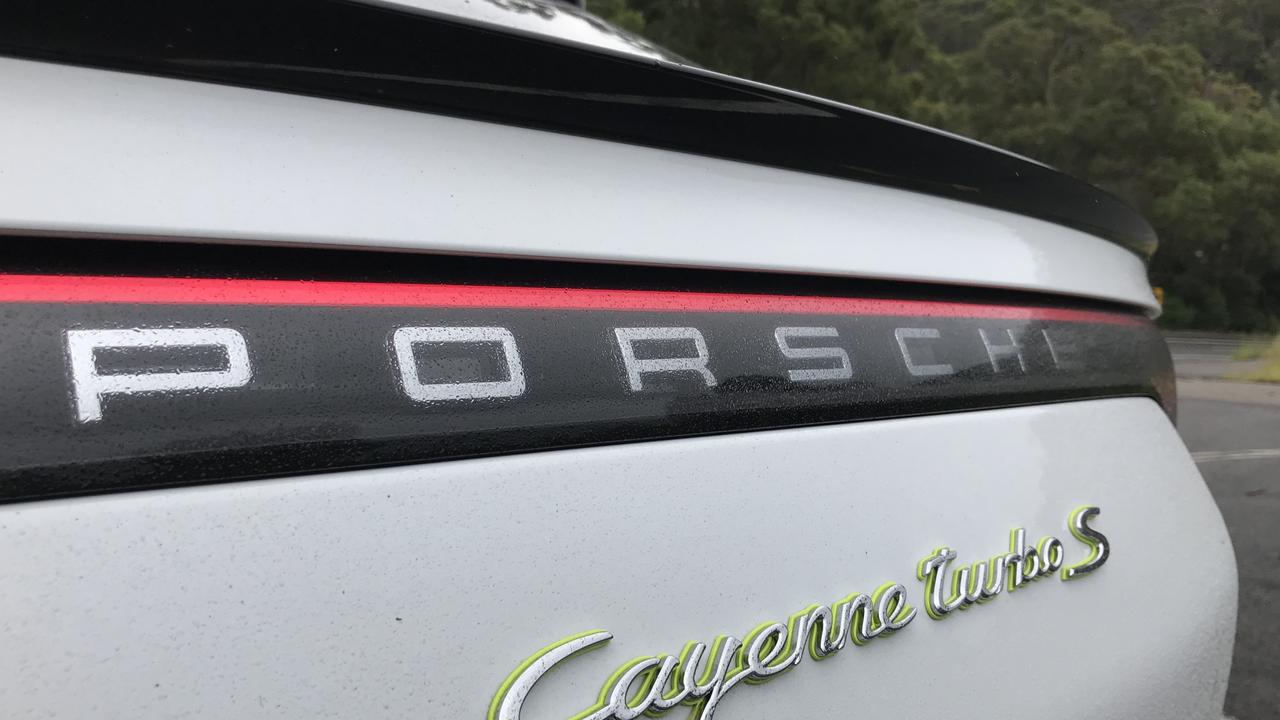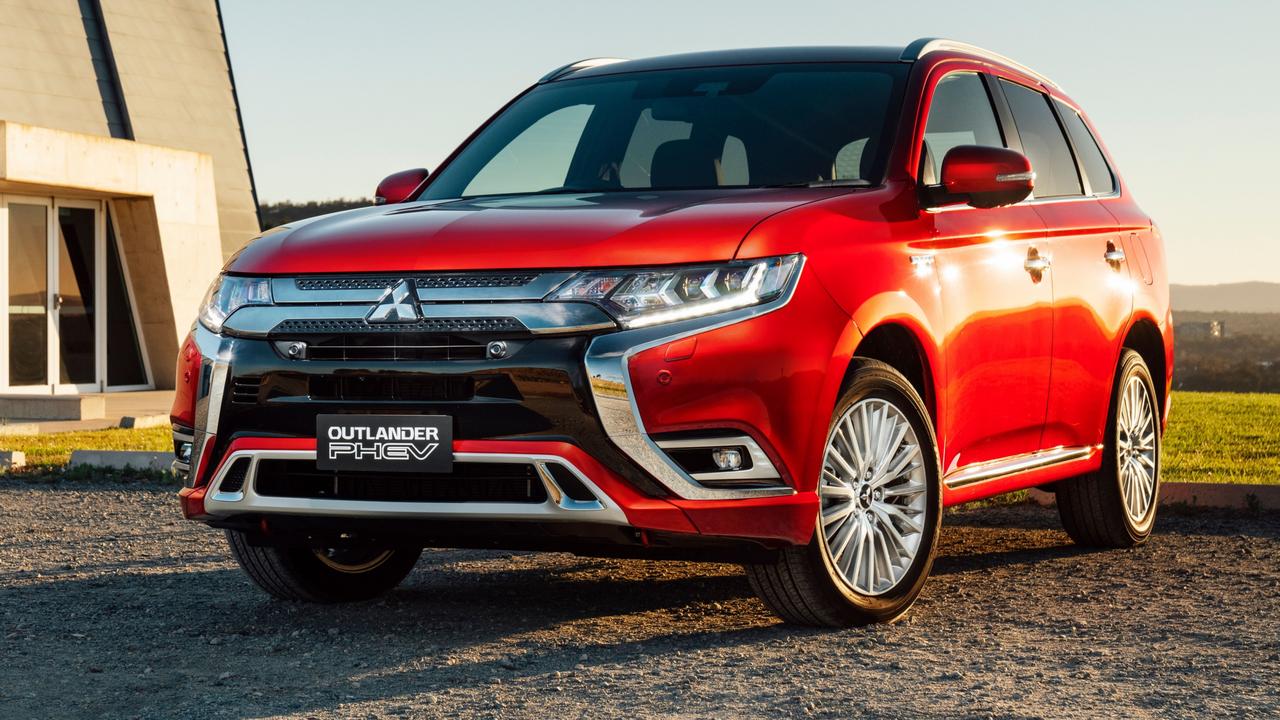German Holden Commodore takes on new Toyota Camry and updated Subaru Liberty
FOR 40 years the Holden Commodore only had one true rival, the Ford Falcon. The new model, however, enters the cut-throat mid-size sedan market.
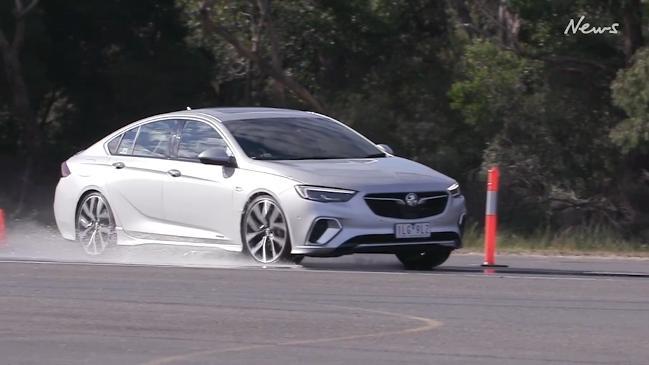
THESE are the sensible shoes of the automotive world, the mid-size sedans buyers prefer for practicality, low running costs and peace of mind.
There are more than a dozen cars in the class but we’ve tested the new, imported Commodore against its two newest rivals, the all-new Toyota Camry Hybrid and recently updated Subaru Liberty.
We’re in the most popular variants: the second model up in each range, from $35,990 to $40,990 drive-away. Here’s how they compare.
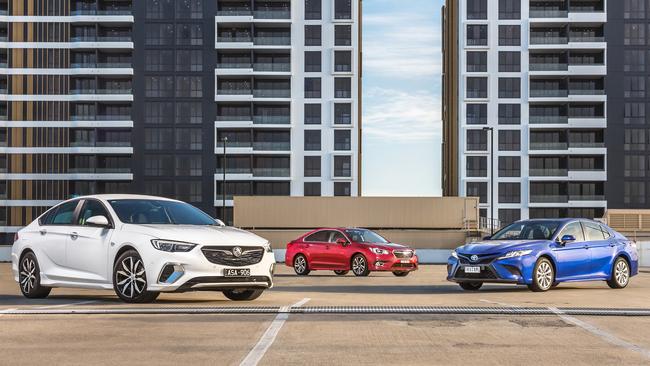
HOLDEN COMMODORE
The Commodore RS, priced from $38,990 drive-away, is likely to be the sweet spot in the new range.
It has all the latest safety mod cons: automatic emergency braking, blind zone warning, lane keeping assistance and, unique in this trio, rear cross-traffic alert, handy when reversing out of shopping centre car spaces.
Apple CarPlay and Android Auto are standard but, unlike the others, this grade doesn’t have built-in navigation. The central touchscreen is the smallest of the three.
There is a digital speed readout but the screen is small and cheap looking — the others have hi-resolution displays.
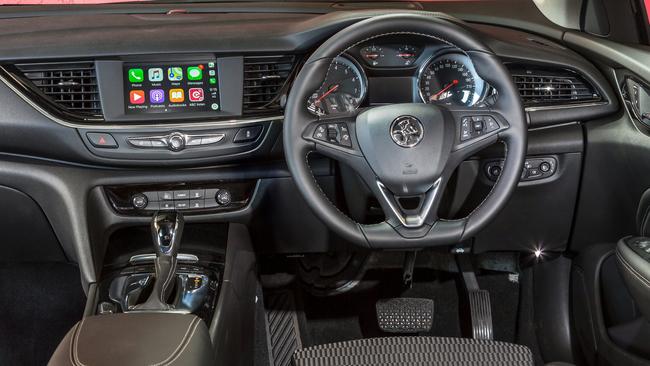
Convenient touches: the sensor key can unlock any of the four doors by touching the handle, whereas the other two cars unlock only the front doors by touch.
The cabin is roomier, front and rear, than the exterior proportions suggest.
The Commodore also has the most adjustment in the driver’s seat to fit all shapes and sizes.
As with the other cars here the Commodore RS has dual-zone aircon control up front, air vents to the second row, two Isofix child seat mounts and three top tether points.
Holden has also made the Commodore family friendly with one USB port and a 12V socket up front and a pair of USB ports near the rear air vents.
Being a hatchback rather than a sedan gives the Commodore a larger boot opening, making it easier to load bulky objects.
The Commodore’s cargo area is shallower but wider than the others, though claimed boot capacity for all three is near-identical, according to their brochures, and in each the rear seats split-fold 60-40.
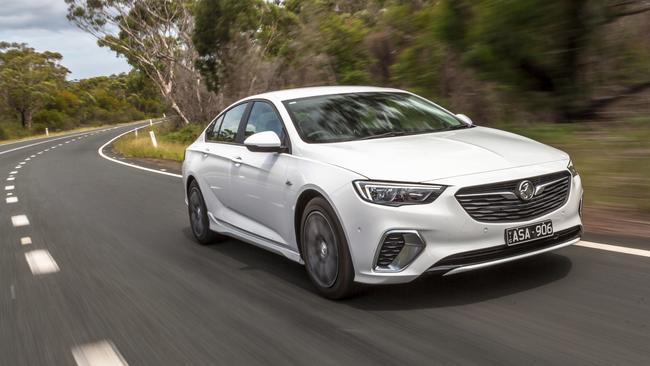
The RS is powered by a four-cylinder turbo but don’t let that put you off. It’s nowhere near a match for the V8, but it is half a second quicker in the 0-100km/h dash than the previous Commodore SV6 (6.7 seconds versus 7.2 seconds according to GPS timing equipment), thanks in part to its nine-speed auto.
That makes the four-cylinder Commodore more than three seconds faster than the Camry Hybrid and Liberty sedan, both of which stop the clock in 10 seconds, according to our GPS timing equipment.
You pay for the performance, though, with a bigger, thirstier fuel bill than the other cars here, plus it insists on 95 premium unleaded.
Holden engineers have done an excellent job of adapting the German-made Commodore to local roads. It recovers quickly over bumps and steers smoothly and precisely in corners, although the smallish brakes could do with a bit more bite.
Service costs are fair: twice the cost of the Toyota Camry and half the price of the Subaru Liberty.
However, Holden has introduced 12 month or 12,500km service intervals (rather than 9 months/15,000km), which means drivers who cover big distances will be stopping more often for routine maintenance.
TOYOTA CAMRY HYBRID
The Hybrid Ascent Sport, from $35,990 drive-away, is effectively the base model but with better looking bumpers, bigger wheels and a little more gear inside.
This is the most daring Camry design to date but it has lost none of its practicality, with a roomy cabin and big boot. Large windows assist outward vision when manoeuvring in traffic and parking.
It’s super efficient, too, sipping just 5.0L/100km in our testing, only a fraction more than the claimed 4.5L/100km — and less than half the thirst of the Commodore and Liberty in real world driving.
This grade comes with automatic emergency braking, lane-keeping assistance, and radar cruise control, however it lacks blind-zone warning and rear cross-traffic alert.
Built-in navigation is standard and the central touchscreen has a large user-friendly display, although it still lacks Apple CarPlay or Android Auto connectivity.
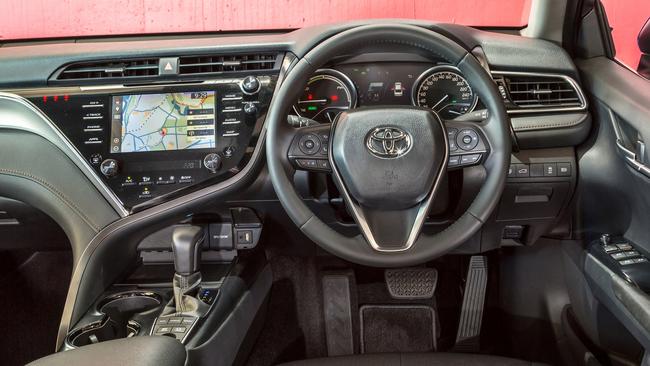
Toyota also scrimps on power outlets, with just one USB port and one 12V socket. Dearer models in the Camry range come with more USB ports, but they should be added across the range.
The hybrid powertrain is a little less zippy than it used to be but it’s smoother and more efficient than before. As with the Commodore, though, it insists on premium unleaded.
The LED headlights (low beam and high beam) were adjusted too low on several examples of the new Camry we tested. Despite being equipped with auto-levelling, they did not project light far enough down the road because they were pointed too low. Toyota says the headlights can only be adjusted by a dealer; we hope there is a running change to make them more suitable to Australian roads.
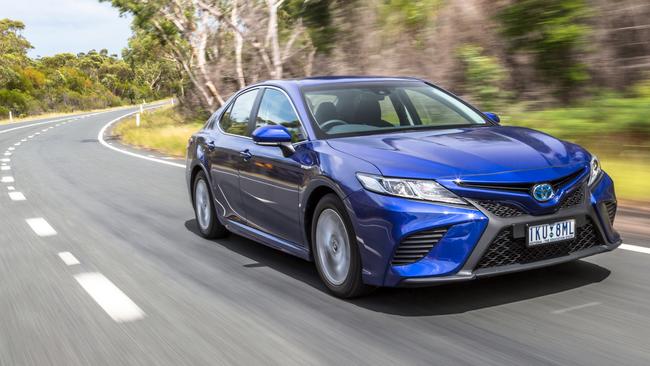
A trait of hybrids, the brakes still feel a bit touchy at low speeds but overall refinement has improved vastly. It doesn’t have the agile handling of the Commodore but it still steers confidently and competently and rides superbly over bumps, without feeling floaty. It’s so luxurious, it could be mistaken for a Lexus.
The Camry also shines with its build quality inside and out, and the stuff you can’t see: running costs.
Service intervals are 12 months/ 15,000km and will set you back only $585 over three years. Low cost servicing continues for five years even though the warranty stops at three.
SUBARU LIBERTY
The Camry has been Australia’s best selling mid-size sedan for almost a quarter of a century but the Liberty has its fair share of loyal buyers.
While the Commodore and Camry are new from the wheels up, the Liberty has just had a midlife makeover. It gets new bumpers, grille, headlights and side mirrors. Engineers have tweaked the suspension and recalibrated the automatic transmission.
Inside it gains a large, high-resolution central touch screen that has built-in navigation as well as Apple CarPlay and Android Auto.
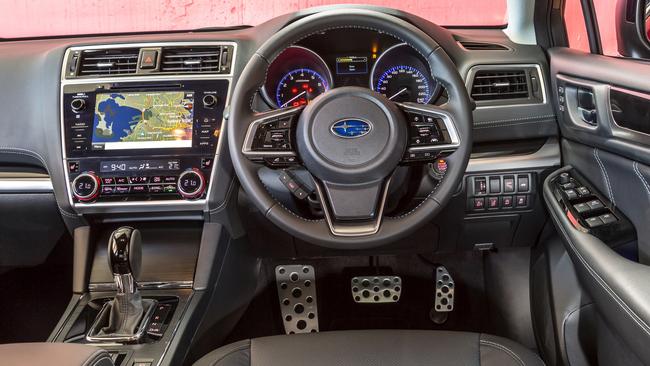
Subaru also refined its “Eyesight” tech — two cameras that scan the road ahead and are used for adaptive cruise control and automatic emergency braking. On our test we noticed they worked better and more accurately at night than they did before.
It’s also the only car here with leather seats and a sunroof (Subaru’s second model up is the $40,990 drive-away Premium). All-wheel-drive hardware also adds to the cost.
The Subaru is holding its age well and — importantly for rural buyers — it’s the only one among this trio that comes with a full size spare tyre. It also runs on regular unleaded.
Inside, Subaru aces this field for connectivity, with two USB ports and a 12V socket up front, and two USB ports in the rear.
One minor downside: only the driver gets a one-touch auto-up power window switch; the Camry and Commodore have them on all four doors.
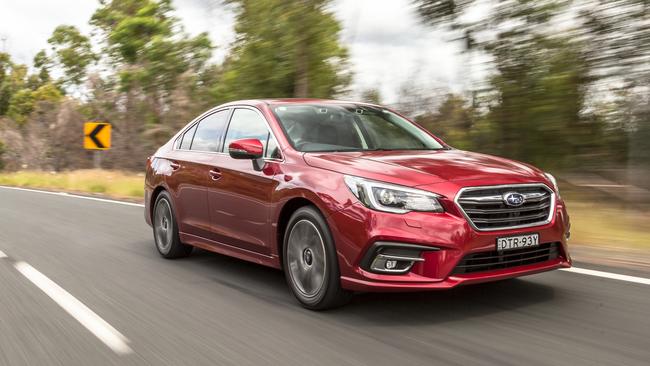
On the road the Liberty is relatively quiet and refined, although the suspension still feels a bit lumpy on bumps. The steering feels a touch too sharp for the car’s size and weight.
There are two big blots on its copybook, however — insanely expensive routine servicing, totalling $2277 over three years, and six-month service intervals.
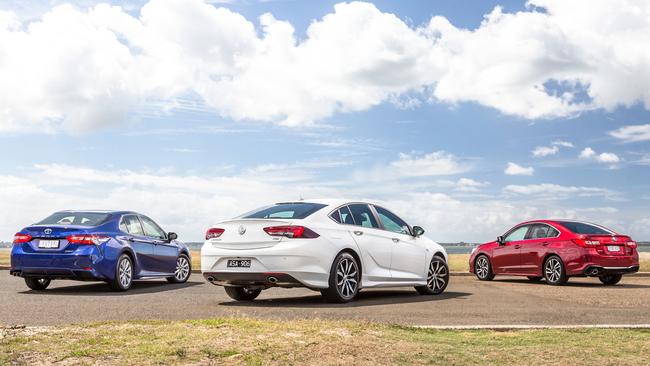
VERDICT
The Subaru Liberty does most things well but it doesn’t drive as nicely as the other two cars here, and its high price and expensive running costs weigh against it in this company.
The Holden Commodore is the best driver’s car among this trio, with surprisingly quick performance and agile road feel. It also has the most comprehensive list of standard safety equipment, but it’s let down by a down-market interior and thirsty engine.
The Toyota Camry Hybrid wins this contest with its sharper price, miserly fuel economy, cheap running costs and luxurious levels of refinement.
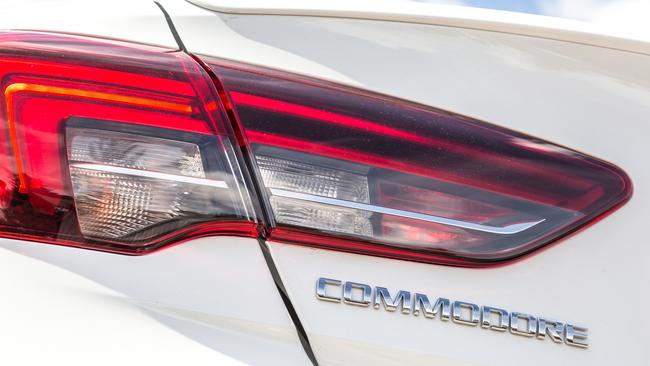
Holden Commodore RS
PRICE $38,990 drive-away
WARRANTY/SERVICE 3 years/100,000km, 12 months/12,000km service intervals, $1176 over 3 years
ENGINE Turbo 2.0-litre 4-cyl, 191kW/350Nm
SAFETY 6 airbags, AEB, RCTA, LKA, blind zone warning, front and rear sensors, rear view camera, 5-star rating
THIRST 7.6L/100km, 95 premium unleaded
SPARE Space saver
BOOT 490L
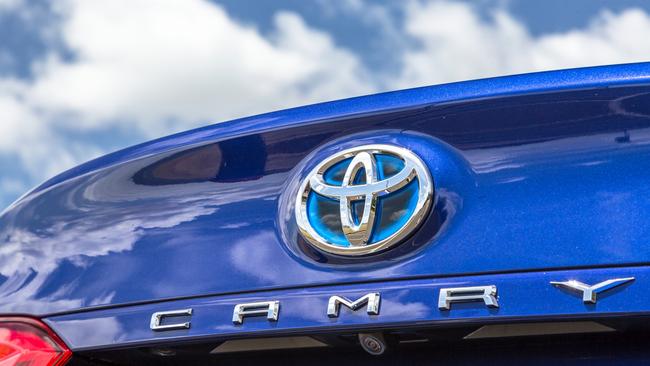
Toyota Camry Ascent Sport Hybrid
PRICE $35,990 drive-away
WARRANTY/SERVICE 3 years/100,000km, 12 months/15,000km service intervals, $585 over 3 years
ENGINE 2.5-litre 4-cyl hybrid, 131kW/221Nm
SAFETY 7 airbags, AEB, LKA, rear view camera, 5-star rating
THIRST 4.5L/100km, 95 premium unleaded
SPARE Space saver
BOOT 493L
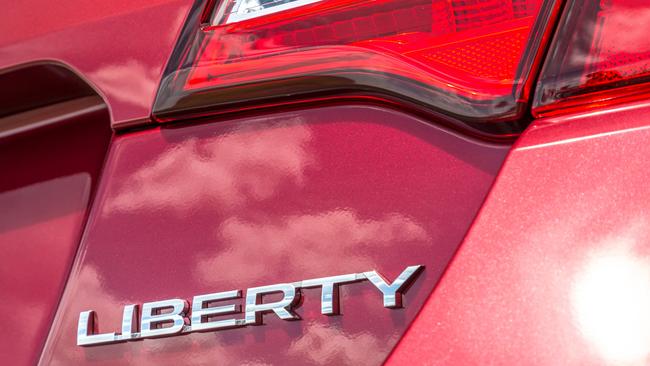
Subaru Liberty 2.5i Premium
PRICE $40,990 drive-away
WARRANTY/SERVICE 3 years/unlimited km, 6 months/12,500km service intervals, $2279 over 3 years
ENGINE 2.5-litre 4-cyl, 129kW/235Nm
SAFETY 7 airbags, AEB, LKA, blind zone warning, rear view camera, forward camera, nearside camera, 5-star rating
THIRST 7.3L/100km, 91 regular unleaded
SPARE Full size, alloy wheel
BOOT 493L
This reporter is on Twitter: @JoshuaDowling

